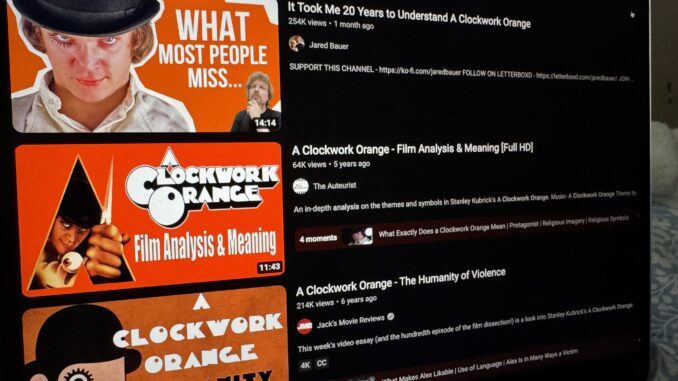
Over the past couple of years, a meme has been circulating online with the quote, “The curtains were fucking blue.” This references the idea that many teachers will push students to look for the symbolism in books, and use one’s instincts to extract meaning from each small detail.
This has become a subject of popular complaint on the internet and, as a result, has led to a lot of content that claims to examine media without actually understanding it.
Media literacy is the ability to critically read and analyze stories presented in media. This can be used to determine the accuracy of information, but it can also be used to analyze symbolism and deeper message. However, this term often loses its meaning and value, especially when used online.
A common example, which I am sure we are all familiar with, is the many “theories” one might see on YouTube Shorts. Often, these videos are read with a text-to-speech generator, and instead of saying anything meaningful, they simply state an often well-known fact from the media it claims to analyze and label as a theory.
Fan theories are speculations about media based on small clues dropped throughout a book, movie or series. Oftentimes, these theories might have no real basis at all, but that is what makes them fun. However, simply stating facts from media is not a theory, and these videos and their creators do not seem to be aware of that.
With such a lack of awareness around the substance of these videos, there becomes an issue with the portrayal of “problematic” content in any kind of media.
When this is discussed online, the problematic content in question is often abuse, rape or certain kinds of violence, among others. This type of discourse reappears on X every few months, and every time, the platform blows up with very little actual debate occurring.
A lack of media literacy online has led to people being unable to realize that creators are not condoning the content they are portraying. While, yes, sometimes the content is not a perfect portrayal of the issue at hand and deserves valid critique, sometimes people just do not like the fact that this content is being shown at all and have come to the belief that a creator is discussing certain content means that they support it.
“The death of the author” is a phrase that is often thrown around online. However, the way it is used online is quite far from the original theory proposed by French philosopher Roland Barthes in his 1967 essay by the same name.
The main argument of the essay was that the meaning of a text is not determined by the author’s intentions, but rather by the reader’s interpretations. The author is not the sole authority on the text. Thus, the author’s intentions when writing the original text do not matter.
Maybe the author had no intentions when they made the curtains blue, but we, as readers, can still find symbolism and importance within that detail. A piece of media cannot be analyzed, or even fully understood, if you only use surface-level analysis.
Though more common with older texts, these intentions are often completely wrong since we have no way of questioning the author about their intentions.
Readers must draw connections between details and symbolism in the text because there is always some sort of meaning or symbolism. Just because the author might not have intended for it to be there does not mean that there is not.
So, yes. Maybe the curtains are just blue. But maybe they could mean something more and just not impact the audience of the piece of media. However, that does not take away from the narrative use of the blue curtains. There may not be a huge intended impact, but it was still so specific that the author sat down and decided that the house needed to have blue curtains.
Subscribe to the Mossy Log Newsletter
Stay up to date with the goings-on at Lewis & Clark! Get the top stories or your favorite section delivered to your inbox whenever we release a new issue.

Leave a Reply